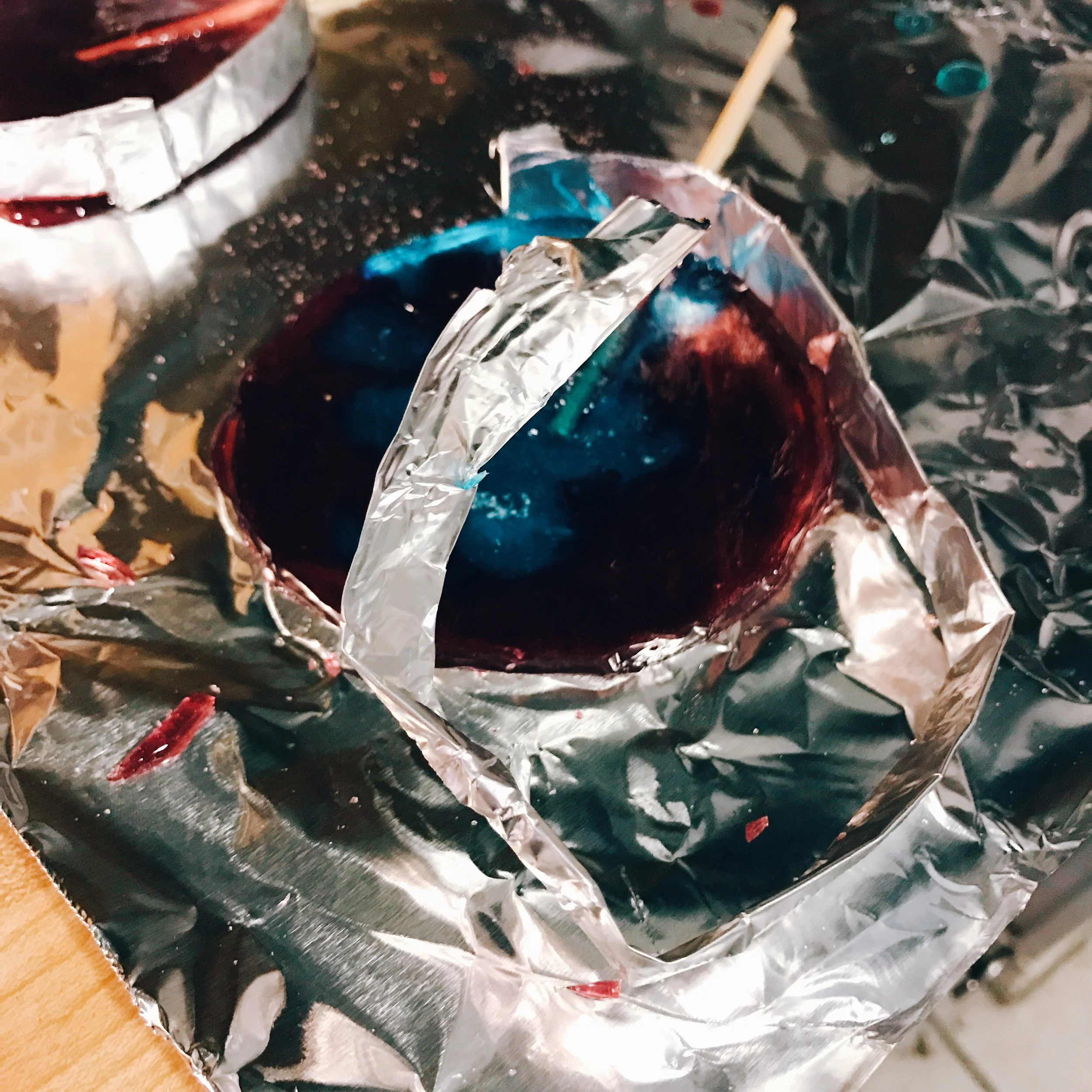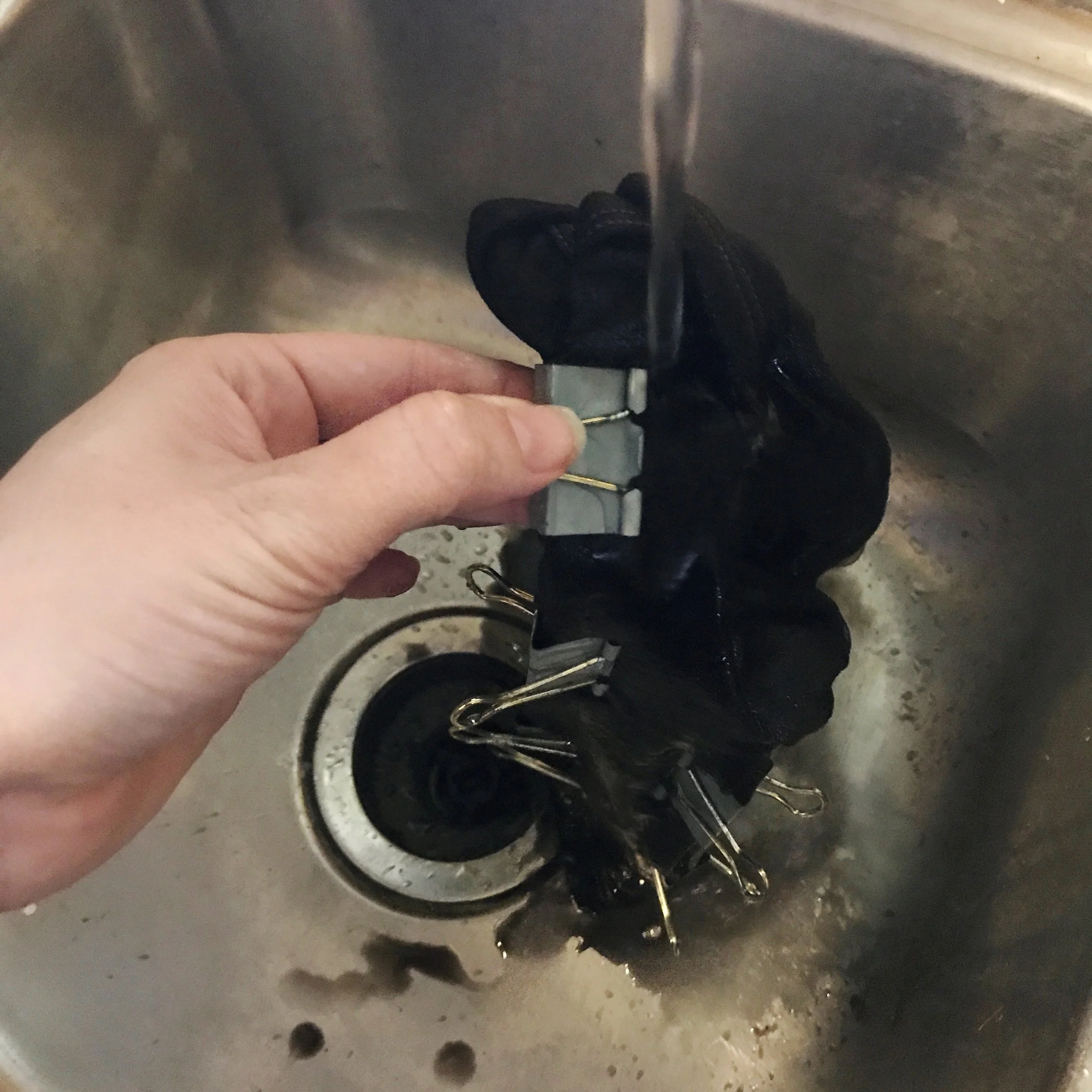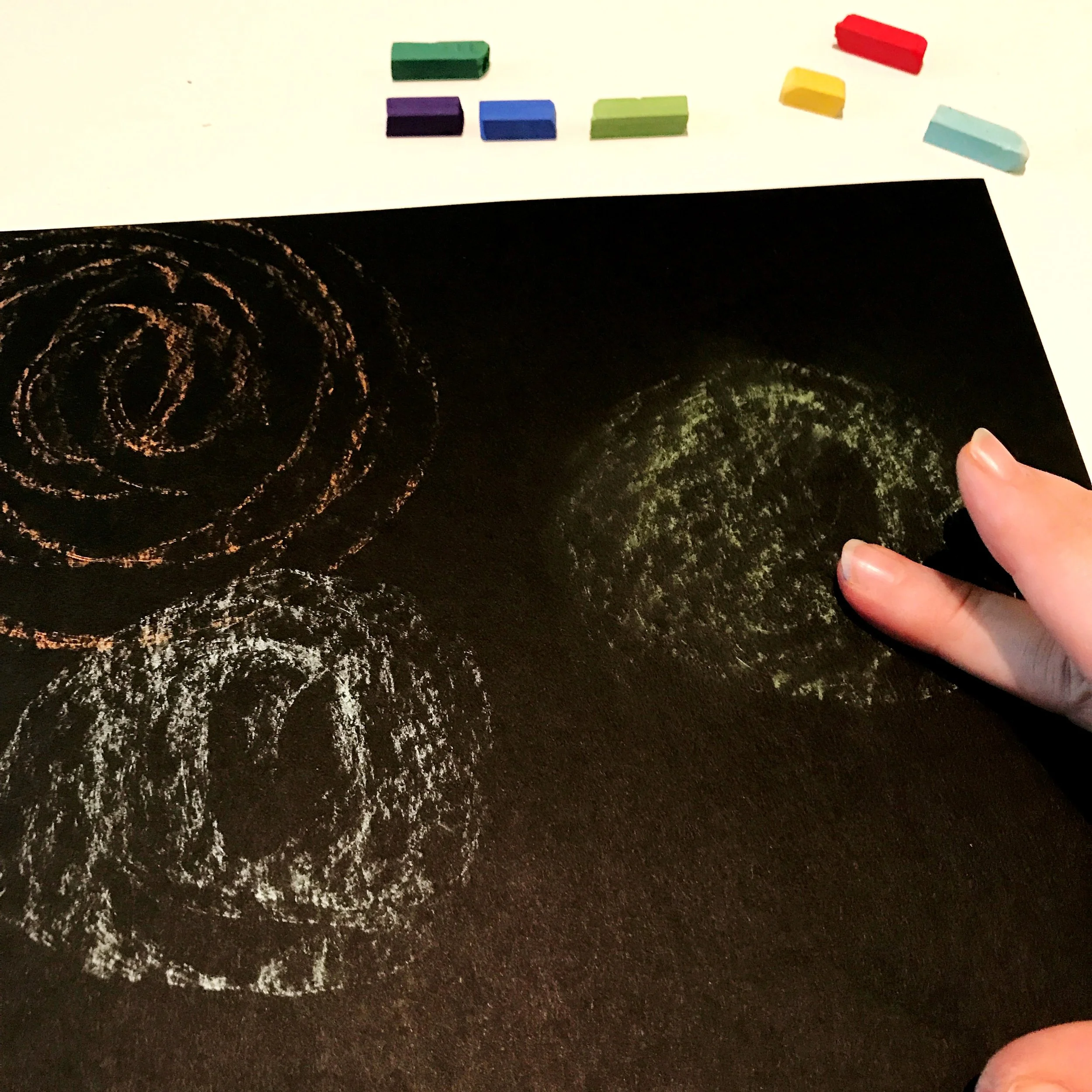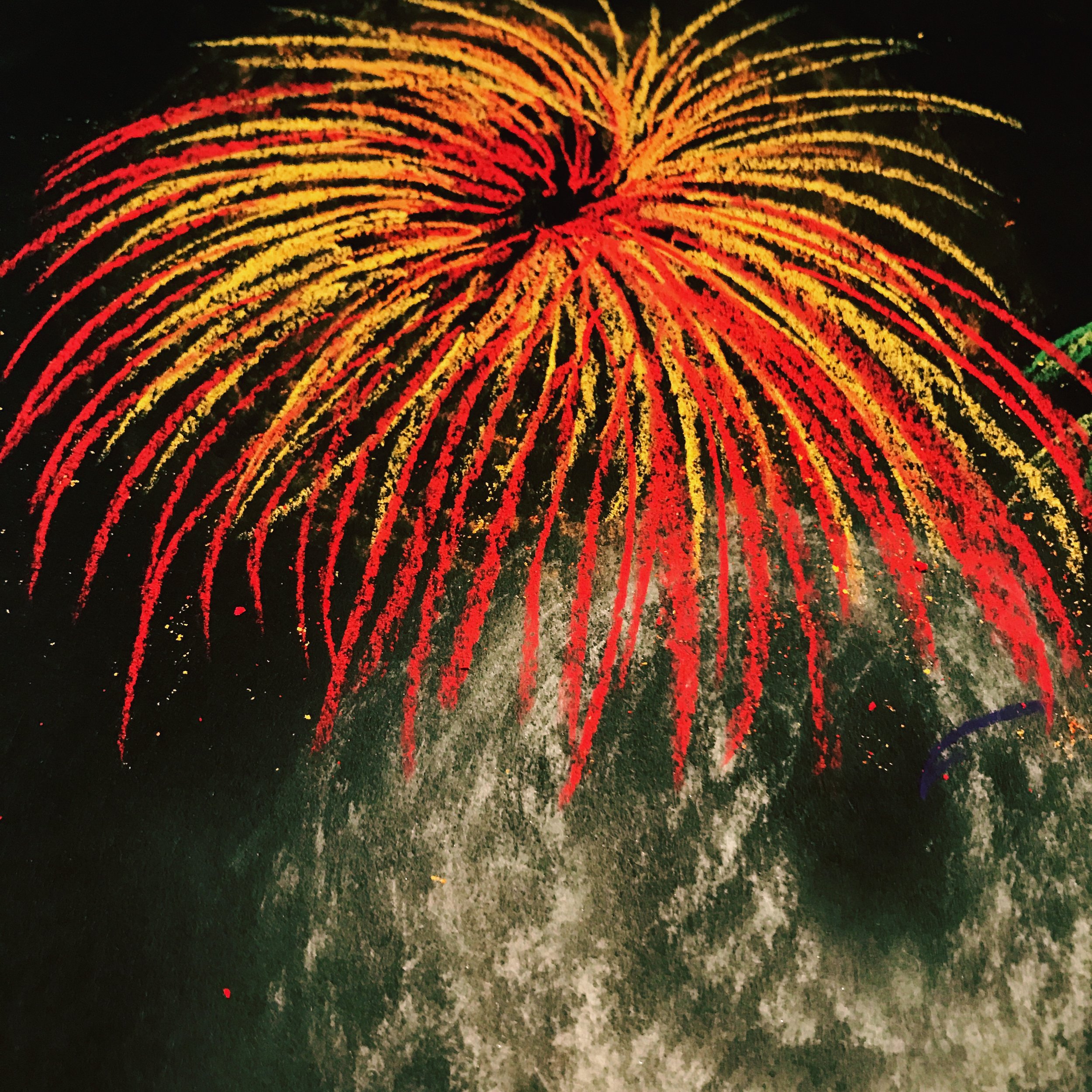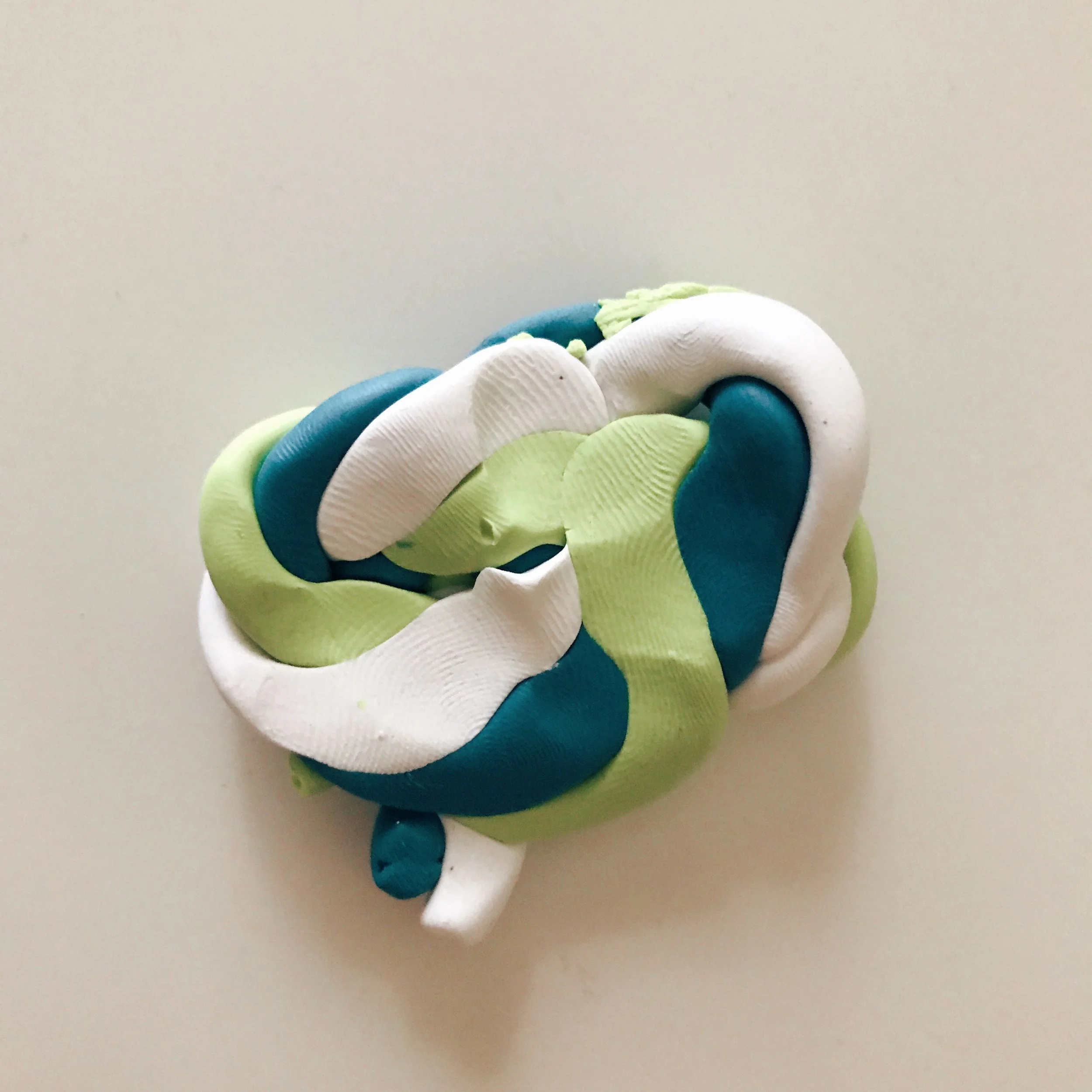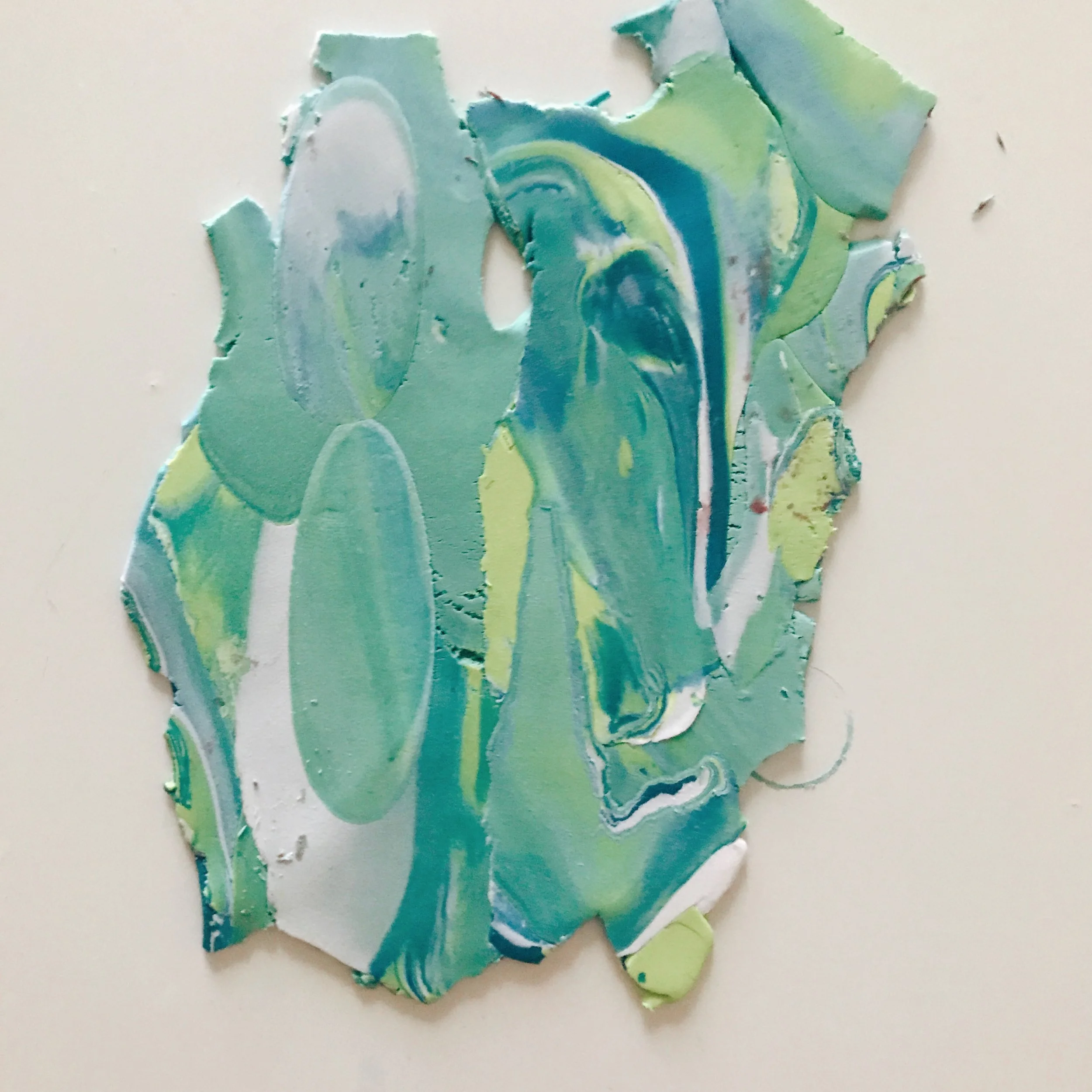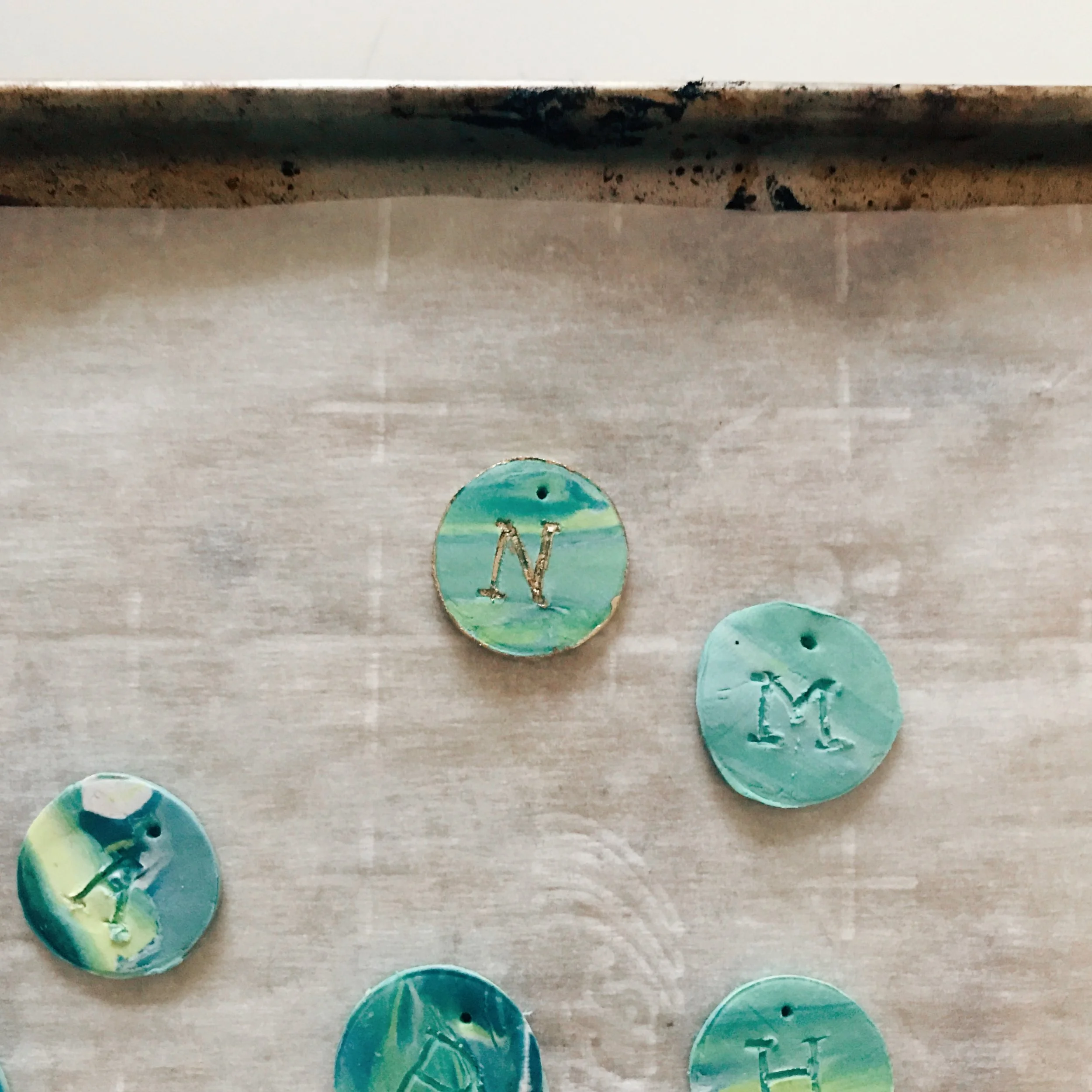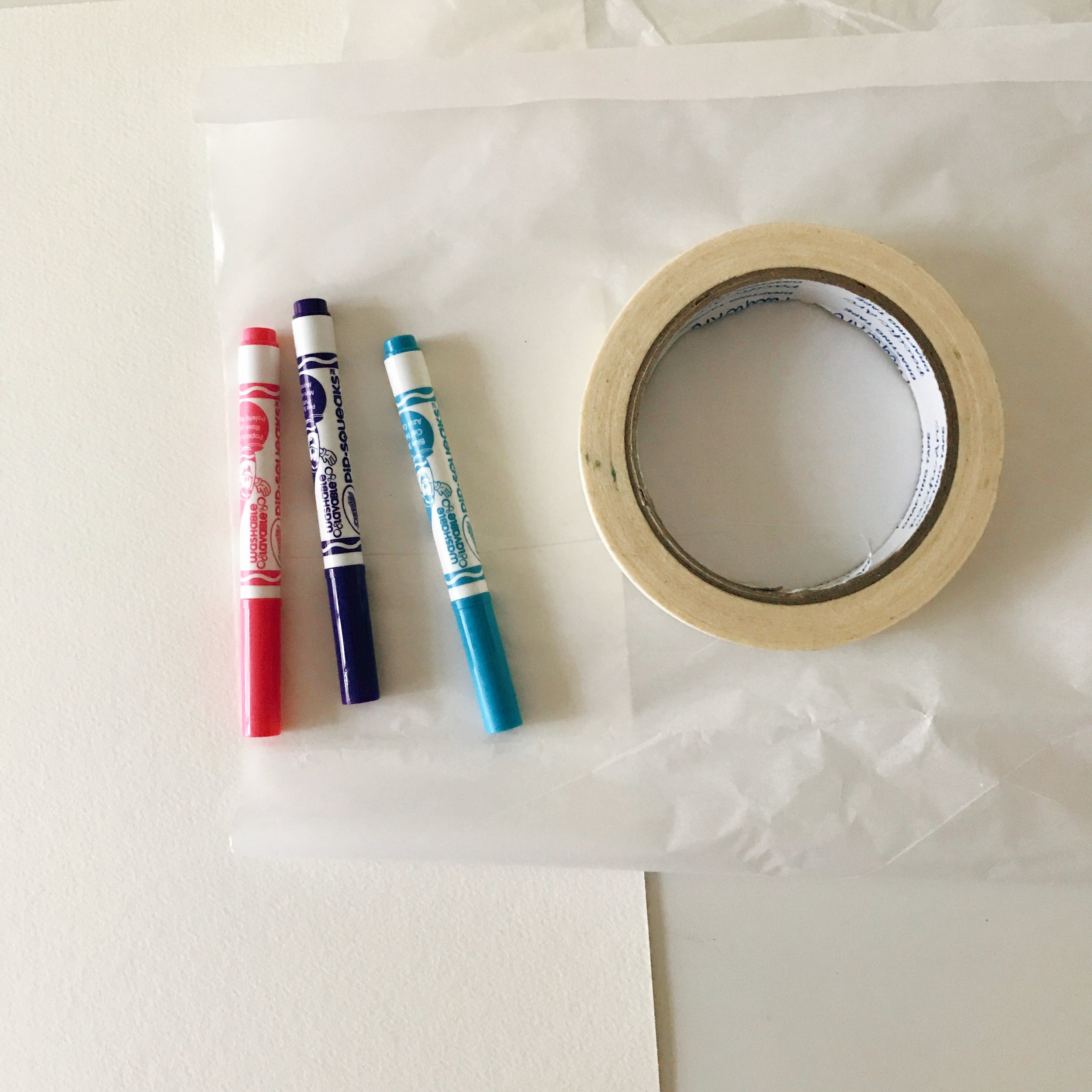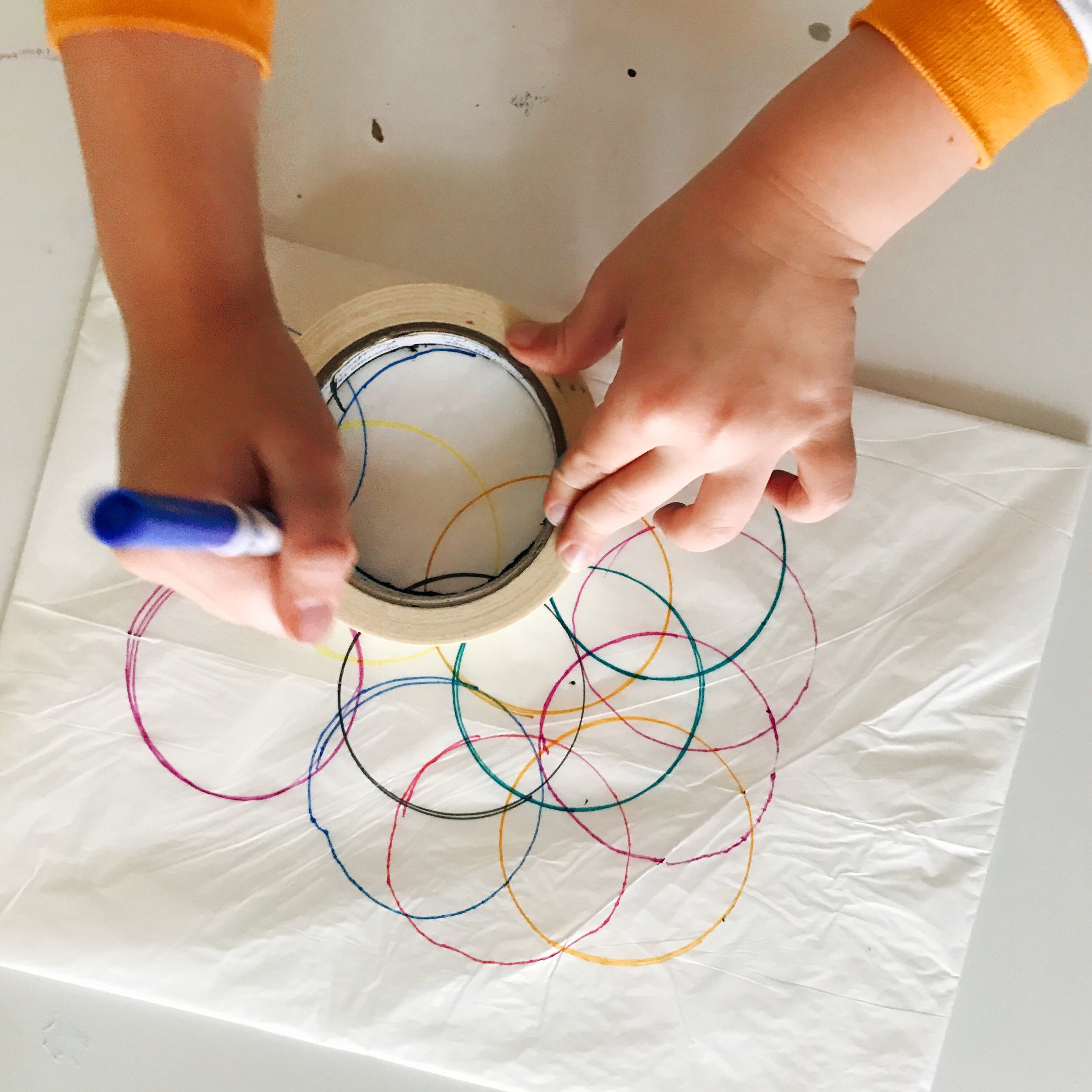I have had so much fun doing projects with my family and sharing with you all Summer! I can't believe we only have two weeks left. This week we made a magical little sun catcher out of glue, food coloring, and glitter. I have to say, the finished product looks much more sophisticated than the $5 I put into this. Chances are, you already have the supplies around your house, too. Gather your school glue (clear for more transparency, but white will work too), food coloring, glitter, wax paper, skewers, small plastic cups, dental floss or thin string, a stick, and twine. Read on for the tutorial!
Lay out your wax paper, and draw the outline of some organic blobs with your glue.
Sprinkle on your glitter, and move the bits that fell in the center towards the edge.
Mix some food coloring and glue in your plastic cups. Stir with a skewer.
Squirt or pour your colored glues inside the blob, alternating colors. You can reuse an old bottle, or an old nose bulb like we did. (Lol) Careful not to fill the center higher than the edge, or the glue will leak over.
Allow your slices to dry 24 hours or more, then slowly peel them from the wax paper. They will look hard, but still feel flexible.
Lay out your pieces in the way you would like to hang them, and poke holes in the top and bottom as needed.
Cut your floss to the proper lengths leaving enough room to tie onto the stick at the top.
String the floss through the holes being careful to maintain the correct distance as you tie.
Tie the floss to the stick. Knot a piece of twine at both ends of the stick to create a hanger, and find a sunny window to enjoy your colorful creation!
Be sure to tag us on Instagram @etsydallas #EDCreativityCamp if you give this project a try. We would love to see!



















